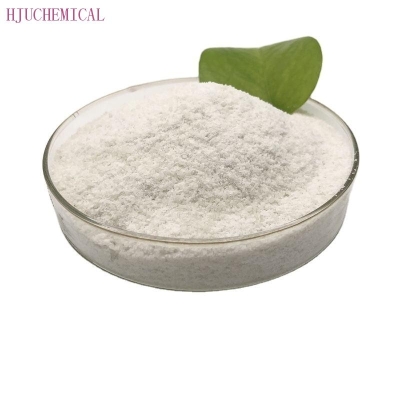-
Categories
-
Pharmaceutical Intermediates
-
Active Pharmaceutical Ingredients
-
Food Additives
- Industrial Coatings
- Agrochemicals
- Dyes and Pigments
- Surfactant
- Flavors and Fragrances
- Chemical Reagents
- Catalyst and Auxiliary
- Natural Products
- Inorganic Chemistry
-
Organic Chemistry
-
Biochemical Engineering
- Analytical Chemistry
- Cosmetic Ingredient
-
Pharmaceutical Intermediates
Promotion
ECHEMI Mall
Wholesale
Weekly Price
Exhibition
News
-
Trade Service
Northwestern Engineering researchers demonstrated a new chemical catalysis method that can use less energy to increase the yield of propylene
.
These findings can support more energy-efficient production processes for many plastics
.
? As one of the highest-volume chemical products, the annual production of propylene is worth more than 100 billion U.
S.
dollars.
It is mainly used to produce polypropylene of various materials, from injection molding of auto parts to consumer products
.
Producing propylene is also energy-intensive, requiring a temperature of about 800 degrees Celsius to convert propane gas into propylene
.
? For a long time, researchers have been studying a technology called oxidative dehydrogenation, which is a propylene production method that is not restricted by propane and not restricted by high temperature
.
This method reacts propane and oxygen on a catalyst to produce propylene and water
.
However, because propylene is more reactive to oxygen than propane, this reaction usually produces only a small amount of propylene
.
? Justin Notestein, professor of chemical and biological engineering at the McCormick School of Engineering, said that this reaction is effective, but similar to turning on a gas grill to cook at home, you will not produce propylene, and Just burn propane
.
The co-corresponding author of the study added that instead of looking for a suitable catalyst, we decomposed the oxidative dehydrogenation reaction into two parts: dehydrogenation and selective hydrogen combustion, and then designed a way to perform the two reactions in a specific order.
Of tandem materials
.
This produces the highest efficiency reported so far
.
? On March 19, a paper titled "Tandem In2O3-Pt/Al2O3 Catalyst for Coupling of Propane Dehydrogenation to Selective H2 Combustion" was published in "Science"
.
Peter · Professor of Chemistry at Weinberg College of Arts and Sciences Peter Stair is the other co-corresponding author of the paper
.
? In this new method, the researchers designed two catalysts with nano-scale proximity: a platinum-based catalyst that can selectively remove hydrogen from propane to produce propylene; the other indium oxide-based catalyst can Selectively burn hydrogen, but not propane or propylene
.
? We found that nanostructures are indeed important.
Notestein said that indium oxide on platinum works well
.
Platinum on indium oxide does not work well
.
Platinum physically combined with indium oxide has no effect
.
Even if both catalysts can complete both reactions, this nanostructure can also separate and arrange the reactions
.
This structure is very common in biology, but very rare in man-made materials
.
? The team's test significantly increased the production of propane to produce propylene
.
At 450 degrees Celsius, through a single pass through the reactor, the test can produce a yield of 30%, while ensuring that more than 75% of the carbon atoms in propane continue to become propylene
.
In contrast, when propane is heated in the absence of oxygen, the yield cannot exceed 24%, and the required catalyst is usually unstable
.
? No one has proved that the yield exceeds these thermodynamic limits.
Notestein said that from a utility point of view, our results are the first to truly justify an attempt to oxidize rather than just a dehydrogenation reaction
.
? The simple design of the system can be further optimized by adjusting the reactor conditions and changing the two catalyst components
.
Current methods of producing higher yields require more complex and expensive engineering solutions
.
Notestein, director of the Center for Catalysis and Surface Science at the Northwest Institute for Sustainable and Energy Research, said that because we rely on a proven design-build-test cycle in engineering technology, there may be more improvements
.
These findings provide us with new ingredients and reasonable strategies to try to find a high-performance catalyst system
.
This is especially beneficial for small-scale plants where energy consumption is very important and current engineering strategies may not be feasible
.
He added that the team’s approach reflects the greater efforts of the National Science Foundation’s Alkane Center for Resource Innovation and Strategic Transformation (CISTAR), which provided funding for this work
.
? These findings can further improve the energy efficiency of many plastics used in structural and material applications
.
For example, plastic parts in cars make cars lighter and more energy efficient, while polymer house exterior walls and siding are durable and help keep the house warm and dry
.
? Notestein said that although plastic has suffered a lot of damage, it is essential to modern society, including efforts to make society more energy-efficient
.
The energy consumption of materials such as propylene and polypropylene using this new method may be greatly reduced, which is good news for everyone
.
.
These findings can support more energy-efficient production processes for many plastics
.
? As one of the highest-volume chemical products, the annual production of propylene is worth more than 100 billion U.
S.
dollars.
It is mainly used to produce polypropylene of various materials, from injection molding of auto parts to consumer products
.
Producing propylene is also energy-intensive, requiring a temperature of about 800 degrees Celsius to convert propane gas into propylene
.
? For a long time, researchers have been studying a technology called oxidative dehydrogenation, which is a propylene production method that is not restricted by propane and not restricted by high temperature
.
This method reacts propane and oxygen on a catalyst to produce propylene and water
.
However, because propylene is more reactive to oxygen than propane, this reaction usually produces only a small amount of propylene
.
? Justin Notestein, professor of chemical and biological engineering at the McCormick School of Engineering, said that this reaction is effective, but similar to turning on a gas grill to cook at home, you will not produce propylene, and Just burn propane
.
The co-corresponding author of the study added that instead of looking for a suitable catalyst, we decomposed the oxidative dehydrogenation reaction into two parts: dehydrogenation and selective hydrogen combustion, and then designed a way to perform the two reactions in a specific order.
Of tandem materials
.
This produces the highest efficiency reported so far
.
? On March 19, a paper titled "Tandem In2O3-Pt/Al2O3 Catalyst for Coupling of Propane Dehydrogenation to Selective H2 Combustion" was published in "Science"
.
Peter · Professor of Chemistry at Weinberg College of Arts and Sciences Peter Stair is the other co-corresponding author of the paper
.
? In this new method, the researchers designed two catalysts with nano-scale proximity: a platinum-based catalyst that can selectively remove hydrogen from propane to produce propylene; the other indium oxide-based catalyst can Selectively burn hydrogen, but not propane or propylene
.
? We found that nanostructures are indeed important.
Notestein said that indium oxide on platinum works well
.
Platinum on indium oxide does not work well
.
Platinum physically combined with indium oxide has no effect
.
Even if both catalysts can complete both reactions, this nanostructure can also separate and arrange the reactions
.
This structure is very common in biology, but very rare in man-made materials
.
? The team's test significantly increased the production of propane to produce propylene
.
At 450 degrees Celsius, through a single pass through the reactor, the test can produce a yield of 30%, while ensuring that more than 75% of the carbon atoms in propane continue to become propylene
.
In contrast, when propane is heated in the absence of oxygen, the yield cannot exceed 24%, and the required catalyst is usually unstable
.
? No one has proved that the yield exceeds these thermodynamic limits.
Notestein said that from a utility point of view, our results are the first to truly justify an attempt to oxidize rather than just a dehydrogenation reaction
.
? The simple design of the system can be further optimized by adjusting the reactor conditions and changing the two catalyst components
.
Current methods of producing higher yields require more complex and expensive engineering solutions
.
Notestein, director of the Center for Catalysis and Surface Science at the Northwest Institute for Sustainable and Energy Research, said that because we rely on a proven design-build-test cycle in engineering technology, there may be more improvements
.
These findings provide us with new ingredients and reasonable strategies to try to find a high-performance catalyst system
.
This is especially beneficial for small-scale plants where energy consumption is very important and current engineering strategies may not be feasible
.
He added that the team’s approach reflects the greater efforts of the National Science Foundation’s Alkane Center for Resource Innovation and Strategic Transformation (CISTAR), which provided funding for this work
.
? These findings can further improve the energy efficiency of many plastics used in structural and material applications
.
For example, plastic parts in cars make cars lighter and more energy efficient, while polymer house exterior walls and siding are durable and help keep the house warm and dry
.
? Notestein said that although plastic has suffered a lot of damage, it is essential to modern society, including efforts to make society more energy-efficient
.
The energy consumption of materials such as propylene and polypropylene using this new method may be greatly reduced, which is good news for everyone
.







